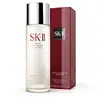What's inside
What's inside
 Key Ingredients
Key Ingredients

No key ingredients
 Benefits
Benefits

 Concerns
Concerns

 Ingredients Side-by-side
Ingredients Side-by-side

Water
Skin ConditioningButyrospermum Parkii Butter
Skin ConditioningButylene Glycol
HumectantGlyceryl Myristate
EmollientHydrogenated Polyisobutene
EmollientPotassium Cetyl Phosphate
EmulsifyingCetyl Palmitate
EmollientIsopropyl Palmitate
EmollientAllantoin
Skin ConditioningDaucus Carota Sativa Root Extract
Skin ConditioningGlycerin
HumectantCarbomer
Emulsion StabilisingStearyl Alcohol
EmollientSodium Hydroxide
BufferingDisodium EDTA
Glycine Soja Oil
EmollientCitric Acid
BufferingParfum
MaskingPhenoxyethanol
PreservativeSorbic Acid
PreservativeSodium Benzoate
MaskingPotassium Sorbate
PreservativeTocopherol
AntioxidantLimonene
PerfumingLinalool
PerfumingAlpha-Isomethyl Ionone
PerfumingCitronellol
PerfumingCitral
PerfumingCoumarin
PerfumingEugenol
PerfumingGeraniol
PerfumingBenzyl Benzoate
AntimicrobialWater, Butyrospermum Parkii Butter, Butylene Glycol, Glyceryl Myristate, Hydrogenated Polyisobutene, Potassium Cetyl Phosphate, Cetyl Palmitate, Isopropyl Palmitate, Allantoin, Daucus Carota Sativa Root Extract, Glycerin, Carbomer, Stearyl Alcohol, Sodium Hydroxide, Disodium EDTA, Glycine Soja Oil, Citric Acid, Parfum, Phenoxyethanol, Sorbic Acid, Sodium Benzoate, Potassium Sorbate, Tocopherol, Limonene, Linalool, Alpha-Isomethyl Ionone, Citronellol, Citral, Coumarin, Eugenol, Geraniol, Benzyl Benzoate
 Reviews
Reviews

Ingredients Explained
These ingredients are found in both products.
Ingredients higher up in an ingredient list are typically present in a larger amount.
Butylene Glycol (or BG) is used within cosmetic products for a few different reasons:
Overall, Butylene Glycol is a safe and well-rounded ingredient that works well with other ingredients.
Though this ingredient works well with most skin types, some people with sensitive skin may experience a reaction such as allergic rashes, closed comedones, or itchiness.
Learn more about Butylene GlycolSodium Benzoate is a preservative. It's used in both cosmetic and food products to inhibit the growth of mold and bacteria. It is typically produced synthetically.
Both the US FDA and EU Health Committee have approved the use of sodium benzoate. In the US, levels of 0.1% (of the total product) are allowed.
Sodium benzoate works as a preservative by inhibiting the growth of bacteria inside of cells. It prevents the cell from fermenting a type of sugar using an enzyme called phosphofructokinase.
It is the salt of benzoic acid. Foods containing sodium benzoate include soda, salad dressings, condiments, fruit juices, wines, and snack foods.
Studies for using ascorbic acid and sodium benzoate in cosmetics are lacking, especially in skincare routines with multiple steps.
We always recommend speaking with a professional, such as a dermatologist, if you have any concerns.
Learn more about Sodium BenzoateSorbic Acid is a preservative. It is the most commonly used food preservative in the world.
Sorbic Acid is a natural antibiotic and highly effective at preventing the growth of fungus. It is less effective against bacteria.
Potassium Sorbate, another commonly-used preservative, is the potassium salt of Sorbic Acid.
Sorbic Acid may worsen eczema. We recommend speaking with a professional if you have any concerns.
Potassium sorbate and sorbic acid can be found in baked goods, cheeses, dried meats, dried fruit, ice cream, pickles, wine, yogurt, and more.
Learn more about Sorbic AcidWater. It's the most common cosmetic ingredient of all. You'll usually see it at the top of ingredient lists, meaning that it makes up the largest part of the product.
So why is it so popular? Water most often acts as a solvent - this means that it helps dissolve other ingredients into the formulation.
You'll also recognize water as that liquid we all need to stay alive. If you see this, drink a glass of water. Stay hydrated!
Learn more about Water